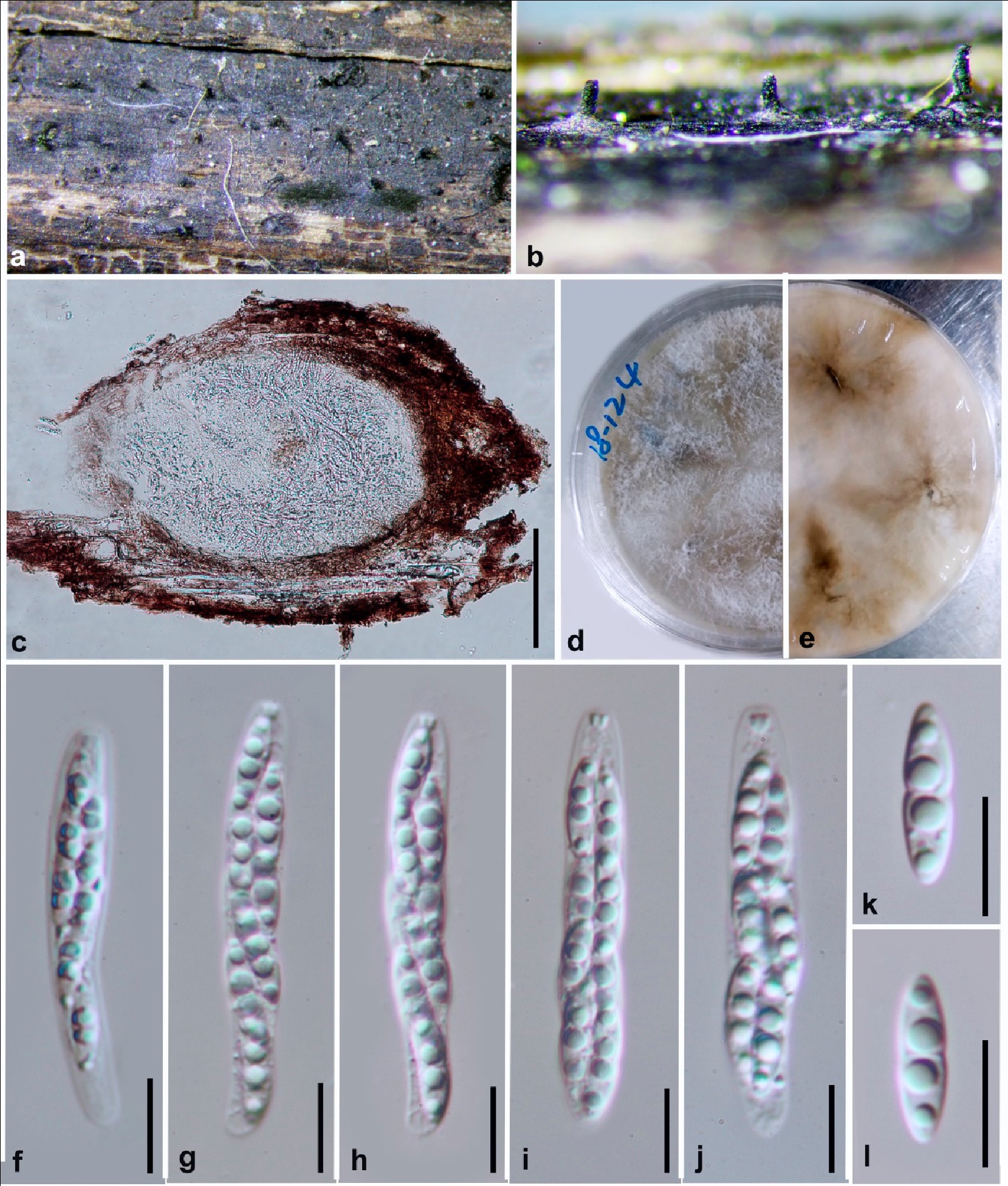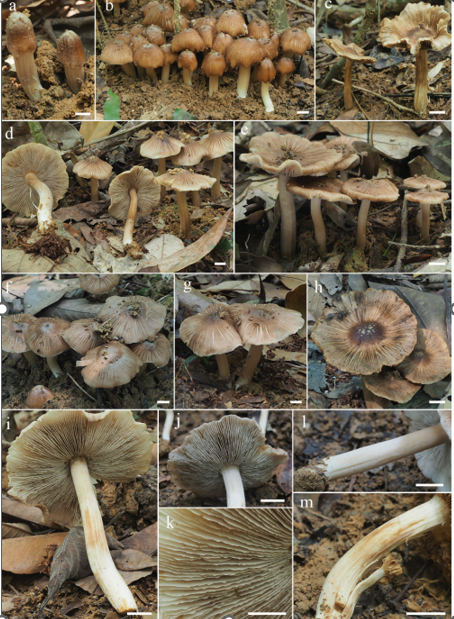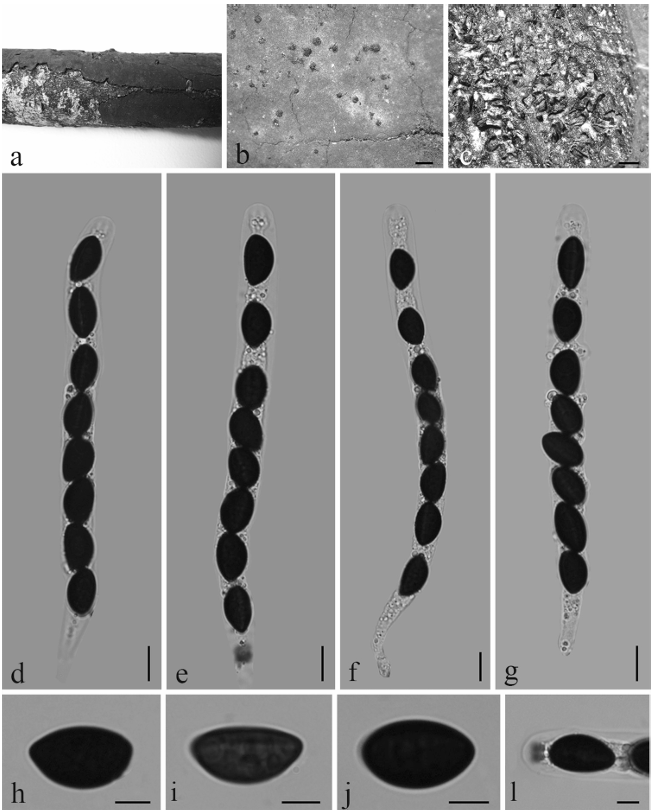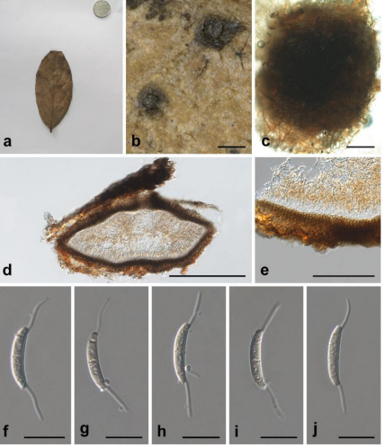Diaporthe guttulata Y.Y. Chen, A.J. Dissanayake and Jian K. Liu sp. nov. 2020
Index Fungorum number: IF557390; Facesoffungi Number: FoF07855; MycoBank Number: MB836212
Holotype: China, Guizhou Province, Maolan Nature Reserve, saprobic on decaying branch, July 2017, Y.Y. Chen (HKAS 107536, holotype), ex-type living culture CGMCC 3.20100 = GZCC 19-0140; ibid, Guiyang District, Suiyang broad water nature reserve, saprobic on decaying woody host, June 2018, Y. Y. Chen (GZAAS 19-2067, paratype), living culture GZCC 19-0371.
Morphological description
Saprobic on decaying branch. Sexual morph: Ascomata 560–630 µm diam, black, globose to conical, scattered irregularly, immersed in host tissue with elongated, 300–400 µm long necks protruding through substrata. Asci 45–57 µm × 7–9 µm (x = 50 × 8, n = 30), unitunicate, 8-spored, sessile, elongate to clavate. Ascospores 12–15 × 3–4 µm (x = 13 × 3.1, n = 50), elongated to elliptical, hyaline, two-celled, often 4-guttulate, with larger guttules at centre and smaller one at ends. Asexual morph: Not observed.Culture characteristics: Colonies covering entire PDA Petri dishes after 7 d at 25 ◦C producing abundant white aerial mycelium. Reverse white, turning to grey in centre and no conidia produced.
Habitat: on decaying branch
Distribution: China
GenBank Accession:
Notes: Diaporthe guttulata formed a distinct clade with high support (ML/BI = 88/1.0), and differed with the closely related species D. angelicae, D. cichorii, D. gulyae and D. subordinaria. Diaporthe guttulata can be distinguished from D. angelicae (7/539 in ITS, 8/467 in tef, 7/453 in tub, 9/606 in cal and 10/513 in his); D. cichorii (8/539 in ITS, 13/467 in tef and 7/453 in tub and 21/606 in cal); from D. gulyae (11/539 in ITS, 8/467 in tef and 13/453 in tub) and from D. subordinaria (6/539 in ITS, 5/467 in tef, 15/453 in tub, 13/606 in cal and 11/513 in his). Morphologically, D. guttulata differs from D. cichorii in having larger asci (50–8 vs. 45–6 µm) and ascospores (13–3 vs. 10–3 µm) [57]. The morphological characters of Diaporthe guttulata cannot be compared with D. gulyae and D. subordinaria as these two species have no reported sexual morphs.
Reference: Asha J. Dissanayake, Ya-Ya Chen and Jian-Kui (Jack) Liu
Diaporthe guttulata (HKAS 107536, holotype). (a,b) Ascomata on host surface. (c) Section of an ascoma. (d) 7 days old culture on PDA from above. (e) 7 days old culture on PDA from reverse. (f) Immature ascus. (g–j) Mature asci. (k,l) Ascospores. Scale bars: (c) = 100 µm, (f–l) = 10 µm.









